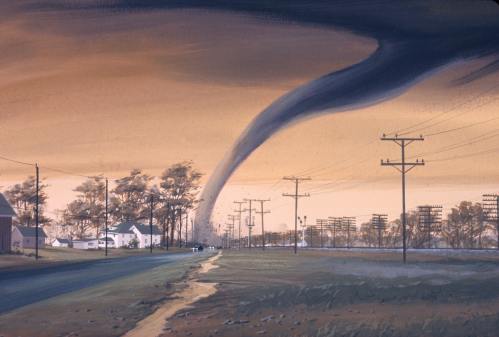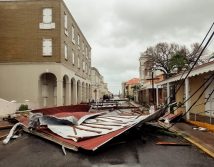In tornado aftermath, Connecticut governor calls for municipal data sharing

After Connecticut residents faced some of the most severe weather seen in nearly 30 years last week — including tennis-ball-sized hail and four tornadoes — Gov. Dannel Malloy is encouraging local governments to partner with the state to share data.
The Democratic governor is encouraging municipal leaders in Connecticut towns and cities to share “critical” data that is needed to determine whether the state can request a major disaster declaration from the federal government. Such a declaration made through the Federal Emergency Management Agency would permit the state and its municipalities to receive federal aid to offset damages caused by the weather events, but the state needs data first, the governor says.
“There is no doubt that Tuesday’s storms wreaked severe damage on many neighborhoods and it will take time for all of those who were affected to recover, which is why it is critical for every municipality to collect the data needed to support a potential request for a federal disaster declaration,” Governor Malloy said.
The National Weather Service confirmed that four tornadoes hit the state on May 15, three of which had wind speeds exceeding 100 miles per hour, which makes them EF-1 tornadoes, with EF-0 being the slowest tornado, and EF-5 being the fastest and potentially most destructive.
In addition to the tornadoes, Connecticut was also hit with two storms that made roads impassable and left many trapped in their homes. Two people were killed in their vehicles by falling trees, according to several local news reports.
For the president to declare a major disaster following a natural event like a tornado or a storm, FEMA requires that the state demonstrate that the disaster “has caused damage of such severity that it is beyond the combined capabilities of state and local governments to respond.” An application for such a declaration must include several items, including confirmation that the state has exercised its emergency plan, an estimate of the amount and severity of damage caused, a description of the work performed by state and local governments, and the amount and type of assistance requested.
Scott DeVico, a spokesperson for the Connecticut Department of Emergency Services and Public Protection told StateScoop that the data the state is seeking is for a damage and cost assessment. Towns are being asked to share the number of homes damaged and the overall estimated costs to their communities. The data shared will be used as the state applies for three forms of federal aid: individual aid, public-sector aid and Small Business Administration loans for businesses.
The state is divided into five emergency management and homeland security regions whose coordinators stay in constant contact with municipal leaders, DeVico said.
“In the regions that have been hardest hit, they’ve been working with the towns as soon as the storm hit,” he said. “They’ve been working around the clock with them.”
A local utility company reported on Monday that the storms caused more damage to the state’s electrical system than 2012’s Hurricane Sandy. Officials from Eversource, a Connecticut-based residential energy provider, say the events destroyed 288 miles of electrical lines and broke more than 1,800 poles, leaving more than 150,000 homes and businesses without power. More than 425 roads remained blocked with trees and downed lines, officials reported on Monday.
Data sharing arrangements and collaborations between state and local government like those being called for by Gov. Malloy have become increasingly common in recent years, particularly following major natural events like 2005’s Hurricane Katrina and accompanying storms, which cost the U.S. an estimated $211 billion and killed more than 1,200 Americans, and 2017’s Hurricanes Harvey, Irma, Jose and Maria, which caused about $200 billion in damages and killed more than 100 Americans.
Connecticut’s most recent storms are now being compared with the tornado outbreak that hit the Northeast in July 1989. Those tornadoes, which hit five states and included two EF-4 tornadoes, caused $130 million in damage, killed one person and injured 150 others.
DeVico said he remembers those storms even though he was young at the time, but it’s difficult to make a direct comparison to last week’s tornados, he said.
“I wasn’t in the towns that were hardest hit,” he said, “but from what we can see, these were very powerful storms that came through and produced a lot of damage.”






